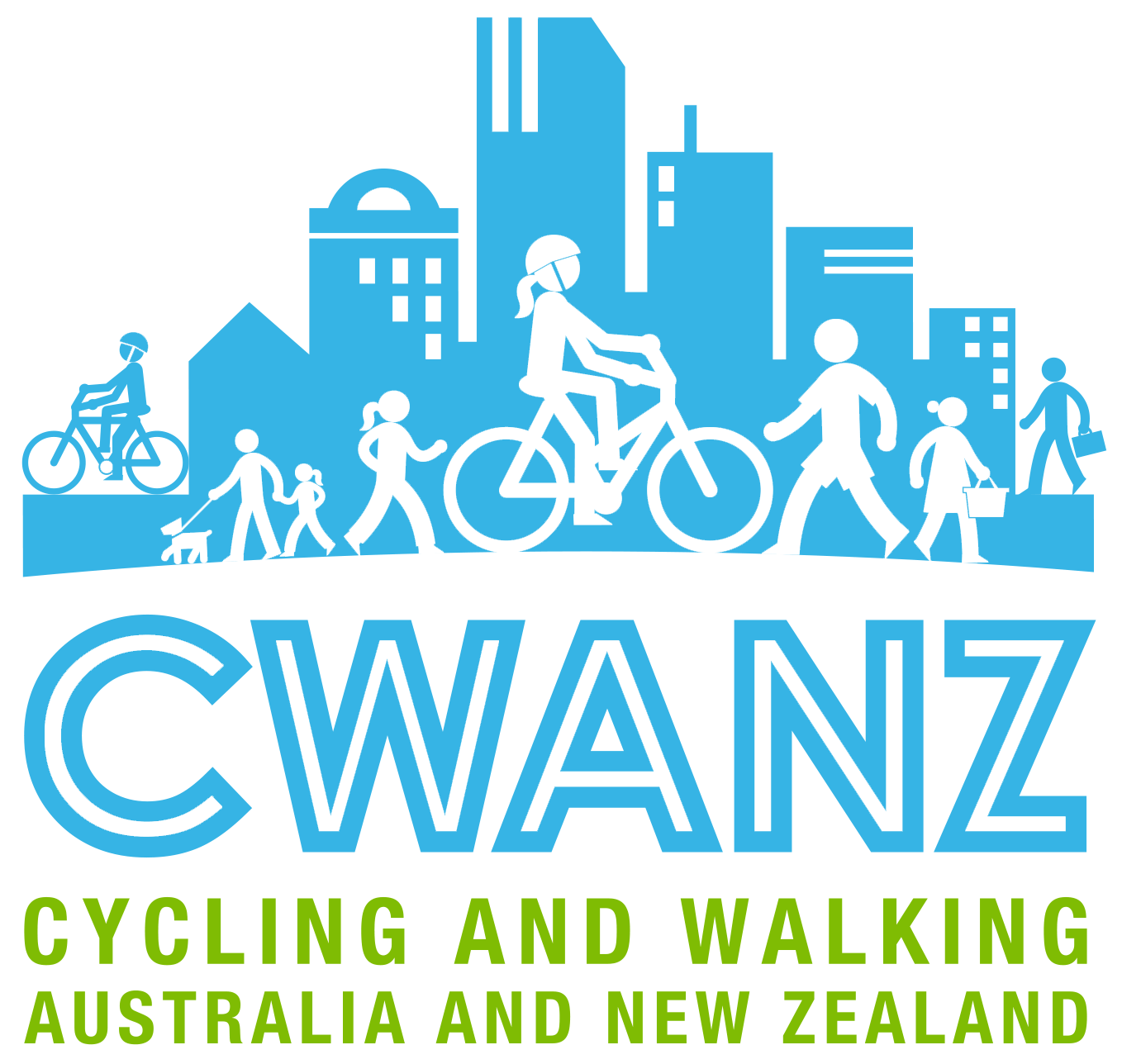Cycling and Walking Australia and New Zealand (CWANZ) Communique May 2018
CWANZ meeting # 1
CWANZ held its first meeting on 16 May 2018 in Melbourne, attended by all non-observer members1, either in person or via teleconference. The aims of the meeting were to approve the CWANZ overview document, Terms of Reference, Code of Conduct and objectives; review and refine challenges faced by CWNAZ; and identify the major deliverables action points for the next two years. This document provides a summary of the outcomes of the meeting. It also includes some additional action items.
1 The Australian Federal Government member, who has observer status, was unable to attend.
1. Documents
The final versions of the CWANZ overview document, Terms of Reference and Code of Conduct are attached to this document (Appendix A).
2. Objectives
The objectives of CWNAZ agreed upon at the meeting are to facilitate and enable:
- More people cycling and walking as integral elements of liveable, healthy and productive communities.
- Increased investment in cycling and walking from all levels of government.
- Applied innovation and learning.
- National consistency and harmonisation.
- Making the case for cycling and walking.
3. Working Groups
It was agreed at the meeting that Working Groups will be formed as required to undertake any projects required to achieve CWANZ’s objectives. The Working Groups will be chaired by a member of CWANZ, with membership being from CWANZ organisations and any other relevant organisations that can provide a valuable contribution to the given project.
4. Action Points
To achieve these objectives, CWANZ will focus on the following actions from 2018 -early 2020.
1. Promoting Cycling and Walking
To increase investment, the number of people cycling and walking and establish cycling and walking as integral elements of our community, we need to promote cycling and walking to key decision makers and stakeholders. This will be achieved by:
- Mapping the key decision makers and stakeholders that CWANZ is seeking to influence;
- Identifying what we are seeking to achieve and how we will do it;
- Developing and communicating a bold vision for increasing cycling and walking with a focus on national initiatives;
- Releasing a CWANZ public statement of why walking and cycling are vital for liveable, healthy and productive communities;
- Ensuring clear, consistent and positive messaging about cycling and walking;
- Encouraging and promoting positive story-telling to seek community engagement;
- Creating information material, including infographics, to promote the key messages of CWANZ.
Objective(s): 1, 4, 5
2. Increased Investment
CWANZ will use the messaging promoting cycling and walking to influence decision makers and seek increased investment in cycling and walking from all levels of government. This will be achieved by:
- Providing leadership on the contribution of cycling and walking to the Movement and Place Framework2 (VicRoads Movement & Place Task Force, 2018); and
- Preparing election submissions and position statements.
2 The Movement and Place Framework is currently being adopted by several Australian jurisdictions, including Victoria and New South Wales, as well as Auckland (Roads and Streets Framework). Also known as Link and Place, Movement and Place will be used as it is known by the majority of members of CWANZ.
Objective(s): 1, 2, 3, 5
3. Monitoring and Evaluation
In order to successfully achieve CWANZ’s objectives, standard data is required to create a successful message promoting cycling and walking and measure whether the objective of increasing cycling and walking has been achieved. In order to build a repository of standard data, CWANZ will:
- Develop a monitoring and evaluation framework for use throughout Australia and New Zealand, including:
- Creating minimum standards for collection and interpretation of cycling and walking data to ensure consistency across Australia and New Zealand;
- Benchmarking participation in cycling and walking, including baseline data and ongoing data collection and interpretation;
- Reviewing the Cycling Participation Survey to ensure the 2019 survey fulfils the minimum data standards created; and
- Exploring the potential for a Walking Participation Survey.
- Prepare a submission before 30 June 2018 for the review of 2021 Australian Bureau of Statistics (ABS) Census Topics, to support the inclusion of:
- Journey to education data; and
- Options combining walking with other transport modes.
Objective(s): 1, 3, 4, 5
4. Improving Safety
CWANZ will use its research, knowledge, and available data to influence the safety conversation in order to prioritise cycling and walking within the Safe System3 approach.
Objective(s): 1, 3
5. Logo and Website
A draft logo for CWANZ has been prepared and is currently under review. It is anticipated that it will be finalised by mid-June. The CWANZ website will be built as a basic portal by August 2018 and will be upgraded as CWANZ progresses.
6. Next Meeting
The next meeting will be held in Perth on Monday 23 July 2018. Paul Steely White, Executive Director of Transport Alternatives in New York City, will be a special guest for the first part of the meeting.
7. Ongoing Tasks
| The current ongoing tasks are: Task | Action Point | Who | Due Date |
| Finalise logo | 1 | EO | 8 Jun 2018 |
| Collate existing cycling and walking data to establish what is available and where the gaps are | 3 | EO | 12 Jun 2018 |
| Map key decision makers and stakeholders | 1 | EO | 13 Jun 2018 |
| Prepare CWANZ public statement of why walking and cycling are vital for liveable, healthy and productive communities | 1 | CWANZ | 19 Jun 2018 |
| Prepare 2021 ABS Census Topics submission | 3 | EO | 30 Jun 2018 |
| Identify what we are seeking to achieve and how we will do it | 1 | CWANZ | 23 Jul 2018 |
Contacts
Executive Officer
